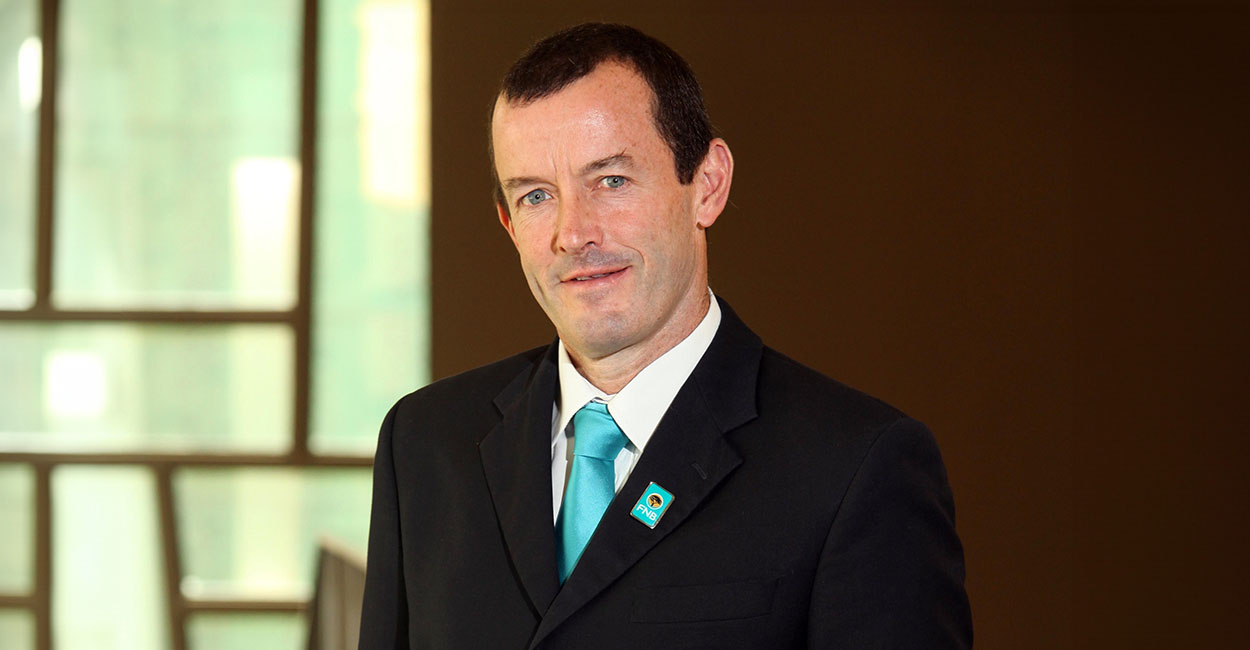MAIN IMAGE: Waldo Marcus, Head of Marketing and Sales at TPN Credit Bureau; Rhys Dyer, CEO of ooba Group
Staff Writer
Property practitioners active in both the rental and sales sectors should not be too concerned despite the recent interest rate hikes as business is experiencing a slow economic recovery.
The TPN Residential Rental Market Monitor for the second quarter of 2022 reveals that residential rental tenants are paying their rentals despite facing economic challenges which are being exacerbated by load shedding and higher fuel prices. Consumers consider rental payments to be the second most important budget credit priority, second only to mortgage or bond repayments.
This bodes well for property practitioners active in the rental industry, especially to note that the number of tenants in good standing with their monthly rental obligations improved from 80.78% in the first quarter to 82.22% in the second quarter.
Waldo Marcus, Head of Marketing and Sales at TPN Credit Bureau said tenants in the R7 000 to R12 000 and R12 000 to R25 000 rental brackets show a strong commitment to paying their rental on time, with 88% and 87% respectively in good standing.
“Although tenants paying between R3 000 and R7 000 – a rental bracket which makes up more than half the market – have not yet recovered to pre-pandemic levels, they continue to head in the right direction, increasing their good standing by 2% to 82.8%.
“Bucking the trend, however, is the rental bracket above R25 000 with a noticeable deterioration in good standing to 77.38%. The deterioration has precedent, however, and is partly attributable to the cyclical nature of tourism, particularly in the tourism regions. Although this rental bracket traditionally experiences a drop in the second quarter of the year, it tends to strengthen again in the third quarter.”
From a provincial perspective, KwaZulu-Natal’s tenants in good standing figure dropped to 80.16% while its vacancy rate remained high at 9.91%. KwaZulu-Natal has the highest rental escalations of all provinces at just under 5%.
Gauteng continues to struggle with rentals growing at just 1.69% year-on-year and has a low vacancy rate at 6.67%. Only 80.62% of tenants are in good standing in the province.
Steep rental increases of 4.17% in the second quarter in the Western Cape have not impacted landlords’ ability to collect rentals. The province’s good standing figure is at 86.61% while its vacancy rate remains stable. The Free State and Northwest are both struggling to collect rent as a result of a high rate of unemployment in both provinces (40.3% and 49.2% respectively).
“Employment figures typically correlate with the formal rental market with improved employment figures combined with higher interest rates tending to drive demand for rental properties. Stats SA’s Quarterly Labour Force Survey showed a small decline in the number of unemployed people in the second quarter. However, Stats SA’s more recently published Quarterly Employment Statistics – which measures employment – found that total employment declined in the second quarter, losing 119 000 jobs,” Marcus stated.
Rhys Dyer, CEO of ooba Group, echoes the positive sentiment and said the Covid-19 period was positive for the local property market, triggering an acceleration in house price inflation and a rebound in activity levels.
“As interest rates now return to ‘normal levels’ it is still a suitable time to buy and long-term views to investments should now be applied. Existing homeowners can breathe a temporary sigh of relief as early indicators suggest GDP recovery over the third and fourth quarter of this year. While economic activity is expected to rebound as the dampening effects of the Kwazulu-Natal flooding fades, the recent bout of loadshedding could stifle the extent of the anticipated recovery.”
He adds that on the home loan front, applicants will continue to benefit from attractive interest rate discounts – spurred on by healthy competition among the banks, longer home loan repayment periods and the more realistic pricing of homes for sale.
Dyer highlights other key trends currently shaping the market:
- A young population drives demand: This ensures sustained demand for housing in South Africa.
- Middle-class mayhem: A substantial portion of South Africa is middle class and most of the home buying activity (between R1 million and R1.8 million) can be attributed to this portion of the market.
- Western Cape leads the way:This is the investment and semigration region of choice – it also receives the most attractive interest rate discounts and the highest approval rates from national banks or financial institutions.
- Investment and holiday homes at a record high: The percentage of applications for investment/rentalpurchases continues to rise, reaching a high of almost 8% in August 2022 – the highest levels since late 2009.
- FLISP answers to the call of lower-income earners: The FLISP Program makes the dream of home ownership a reality for lower-income, first-time homebuyers.
Dyer believes that now is the best time to forward plan and budget for every eventuality.
“Rising costs are a reality, however, pre-planning, budgeting, and saving go a long way to ensuring financial wellness. Rather than over-extending yourself and potentially damaging your credit score, now is a good time to cut back wherever possible,” he said.








